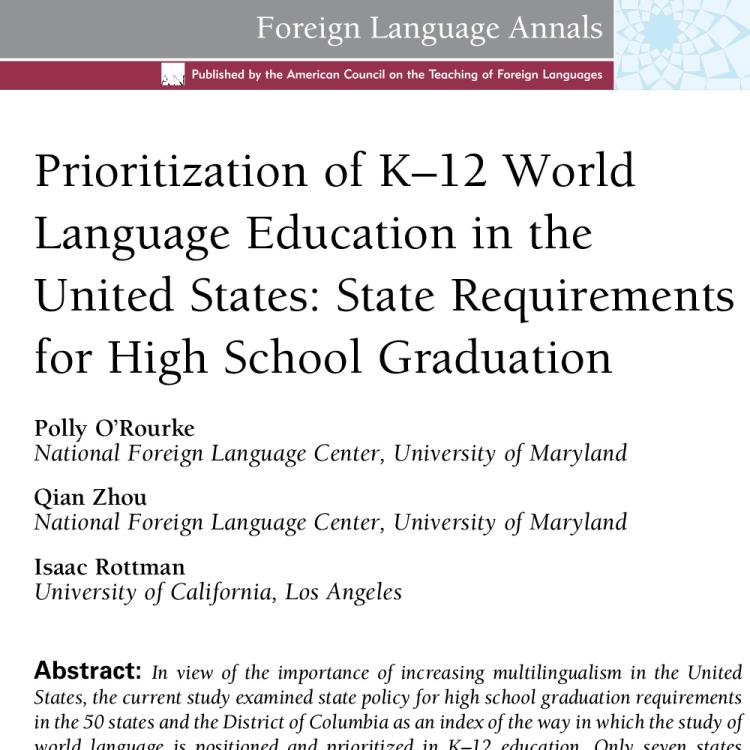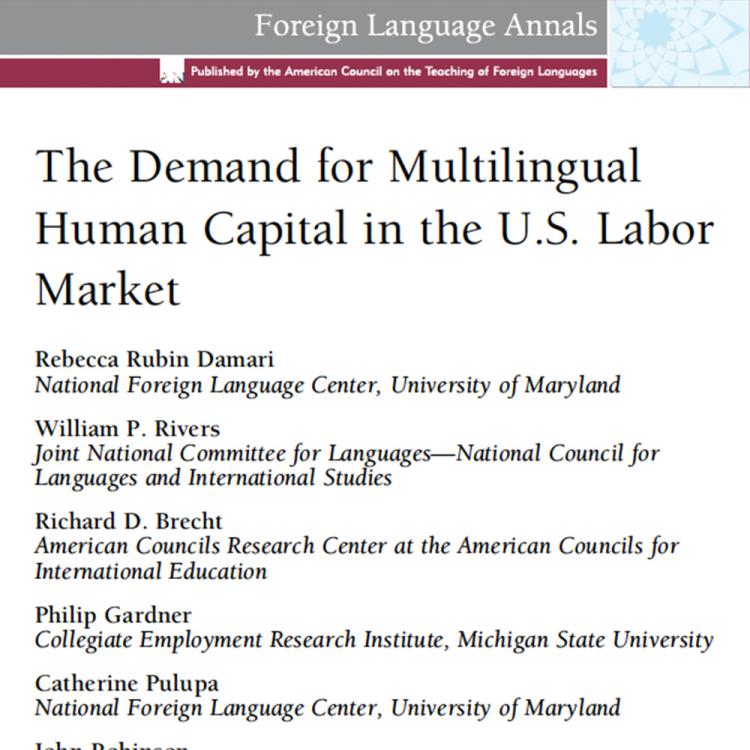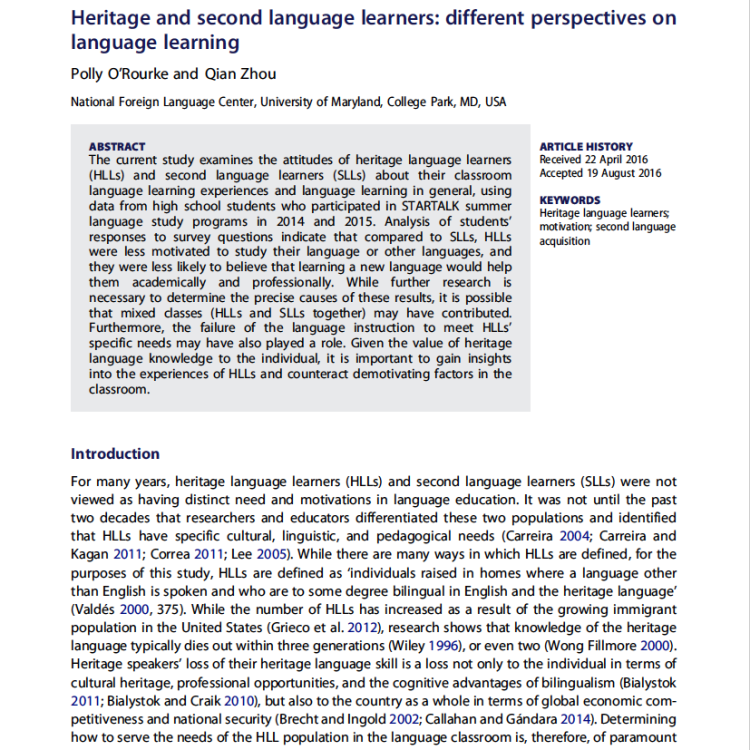Prioritization of K–12 World Language Education in the United States
This article examines high school graduation policies in all fifty states and the District of Columbia in order to assess the status of world language study in K–12 education. The article concludes that world language education is not prioritized in state-level policies, and it recommends initiatives at the federal level to improve the state of world language education in the United States.



